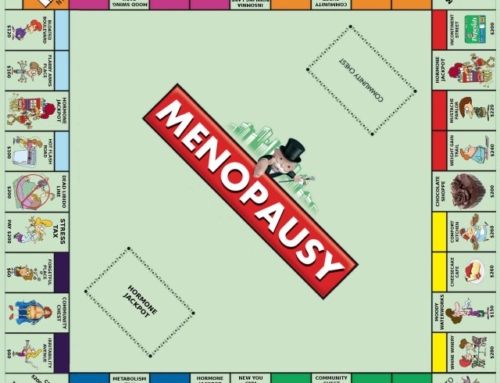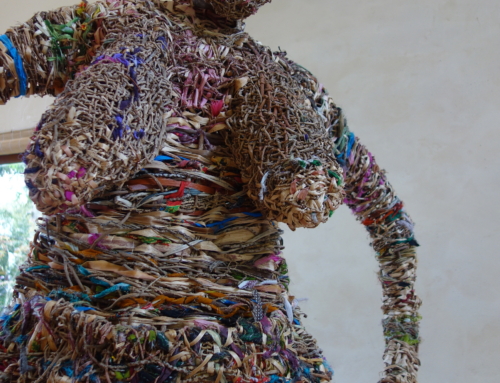I haven’t read Naomi Wolf’s new book, Vagina: A New Biography, but I am enjoying the public controversy over of the content. Thanks for bringing up the subject, Naomi. Author of The Beauty Myth, Naomi Wolf is known for her capacity to incite women to question accepted and internalised values. But why, in a culture where the objectification of women’s bodies has become sickeningly ordinary, has Naomi Wolf’s book about her personal search for sexual and holistic health (technicolour orgasms included) caused such a stir? Shame and stigma of the female genitalia still haunt us. Back in the nineties Wolf was applauded in her outcry to women to stop carving up their bodies desperately seeking to conform to some predetermined norms. Now critics would like Naomi to cross her legs.
Neuroscientists are quick to discount Wolf’s conclusions about the brain-vagina connection as mere myths, while other reviewers are keen to dismiss the book as half baked theories espoused from the lips of a ‘self obsessed privileged white celebrity feminist’. And Apple’s iTunes has offered her free publicity by asterisking out half the letters of the anatomically correct title in some bizarre attempt at censorship.
The title of Naomi Wolf’s new book, which explores why the vagina is still thought of as ‘slightly shameful even today’ has been censored by Apple.
Apple’s iTunes store has starred out part of the title of Wolf’s new book Vagina, calling it instead V****a, and replacing the word throughout the book’s description. So, according to Apple, Wolf’s book is “an astonishing new work that radically changes how we think about, talk about and understand the v****a”– Alison Flood (a momentary pen name!?) Guardian weekly, UK
A quick stop at the newsagent. Well, not so quick. Standing in a cue for about 2 and half minutes. A girl less than twelve on the cover of Girl Power magazine, aimed at a tween readership. In shorts small enough to be called knickers she is squatting with her hand suggestively between her legs and the classic make-up baked pout face. ‘Spank Me’ demands another blonde fashion magazine cover.
I walk past the local Beauty Therapist. Bikini waxing only $49, vajazzling $10. I am reminded of the words on a Cosmopolitan magazine cover a couple of years ago, ‘Untamed Va-jay-jays.’ (Are we suggesting these wild beasts between our legs need domesticating!?)
The next day I am facilitating a workshop for mothers and pubescent daughters. I speak frankly about female anatomy, and add lots of humour. ‘Vagina’ gets lots of squirms and giggles. One girl thinks a vulva is a type of car, another thinks it’s a shortened form of the word revolver.
No one wants to talk about IT, just around it. Or if somehow we can market it as a multi-billion dollar ccommodity, like vaginoplasty or ‘vaginal rejuvenation’ (now common vaginal cosmetic surgery), or pussy talks on the phone, THEN we can talk about it. Fifty one percent of the globe’s population have one. If Naomi Wolf’s book was about her selling her vagina as a prostitute or sex industry worker, then would it be okay? I suppose we could still avoid the word Vagina.
 Taken from wikipedia: ‘The vagina (from Latin vāgīna, literally “sheath” or “scabbard”) is a fibromuscular tubular tract which is a sex organ and has two main functions; sexual intercourse and childbirth.’
Taken from wikipedia: ‘The vagina (from Latin vāgīna, literally “sheath” or “scabbard”) is a fibromuscular tubular tract which is a sex organ and has two main functions; sexual intercourse and childbirth.’
Let’s expound. It is also our largest orifice, a place of heightened sensitivity and intimately connected to our intuition as women. Not to mention a place from where we menstruate, ovulate, a pleasure centre, and in traditional chinese medicine vaginal secretions make up part of a holistic diagnosis. Can we not reduce it to a sheath please? It functions perfectly well without ever holding a sword or birthing a baby.
And while I’m on the subject, where have all the untamed va-jay-jays gone? Even the one in the wikipedia photograph looks pre-pubescent. Only a young girl naturally has no hair on her vagina. If we are trying to educate the public on anatomy can we please use a woman’s vagina, since the definition relegates it’s uses to childbirth and intercourse. Surely we are not promoting either of those uses for girls.
Shakti is the Feminine creative force. Sacred life force. Primordial cosmic energy. Ancient dakinis knew of Shakti’s domain in the pelvic cauldron, and the importance of honouring her embodiment in the female form. Oct 24th was the last day of the most recent Navratri Goddess worship in India’s quarterly 9-days of holy chanting, where Shakti is worshipped and her many holy names chanted.
Your vagina is your vagina. Our most gaping, sacred and vulnerable place. It is more than the name that makes our culture cringe and want to change the subject. Your “Goddess array” (one of Wolf’s terms) is harbouring cellular memories of centuries of abuse, and older than that, memory of sacred flowering, of communion with ecstatic states designed to enlighten us towards acts of compassion and true humanity. We don’t need clinical evidence based research to imagine that when women can begin claiming their own healthy sexuality, regardless of their sexual preferences, we may begin to embody the creative changes that this aching world is waiting for.
The ultimate misunderstanding would be to conclude that a woman is her vagina, and Wolf comes perilously close, apparently unconcerned that some such notion is the central tenet of misogyny. Germaine Greer, S M H
.








I love your article. It’s provocative, challenging and well written.
Great article. I use the word vagina as often as I can – especially around my students. I wrote a post a while back, where its title was Vagina! Vagina! 🙂